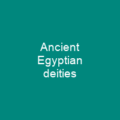The ancient Egyptian calendar – a civil calendar – was a solar calendar with a 365-day year. The year consisted of three seasons of 120 days each, plus an intercalary month of five epagomenal days treated as outside of the year proper. Because this calendrical year was nearly a quarter of a day shorter than the solar year, the Egyptian calendar lost about one day every four years relative to the Gregorian calendar.
About Egyptian calendar in brief

The names of the three natural seasons were incorporated into the Civil calendar year, but as this calendar year is a wandering year,. the seasons of this calendar slowly rotate through the natural solar year,. meaning that Civil season AkhetInundation only occasionally coincided with the Nile inundation. As early as the reign of Djer, yearly records were being kept of the flood’s high-water mark. Otto E. Neugebauer noted that a 365 day year can be established by averaging a few decades of accurate observations of the Nile flood without any need for astronomical observations. Some evidence suggests the early civil calendar had 360 days, although it might merely reflect the unusual status of the five epageal days as days added on to the proper year. Some Egyptologists have described it as lunisolar, with an interCalary month supposedly added every two or three years to maintain its consistency with the solar years, but no evidence of such intercalation before the 4rd century BC has yet been discovered. The introduction of a leap day made it equivalent to the reformed Julian calendar, although by extension it continues to diverge from the Gregorians calendar at the turn of most centuries. The last two days of each decan were usually treated as a kind of weekend for the royal craftsmen, with royal artisans free from work. Until the closing of Egypt’s pagan temples under the Byzantines, the lunar Calendar continued to be used as the liturgical year of various cults.
You want to know more about Egyptian calendar?
This page is based on the article Egyptian calendar published in Wikipedia (as of Jan. 03, 2021) and was automatically summarized using artificial intelligence.







